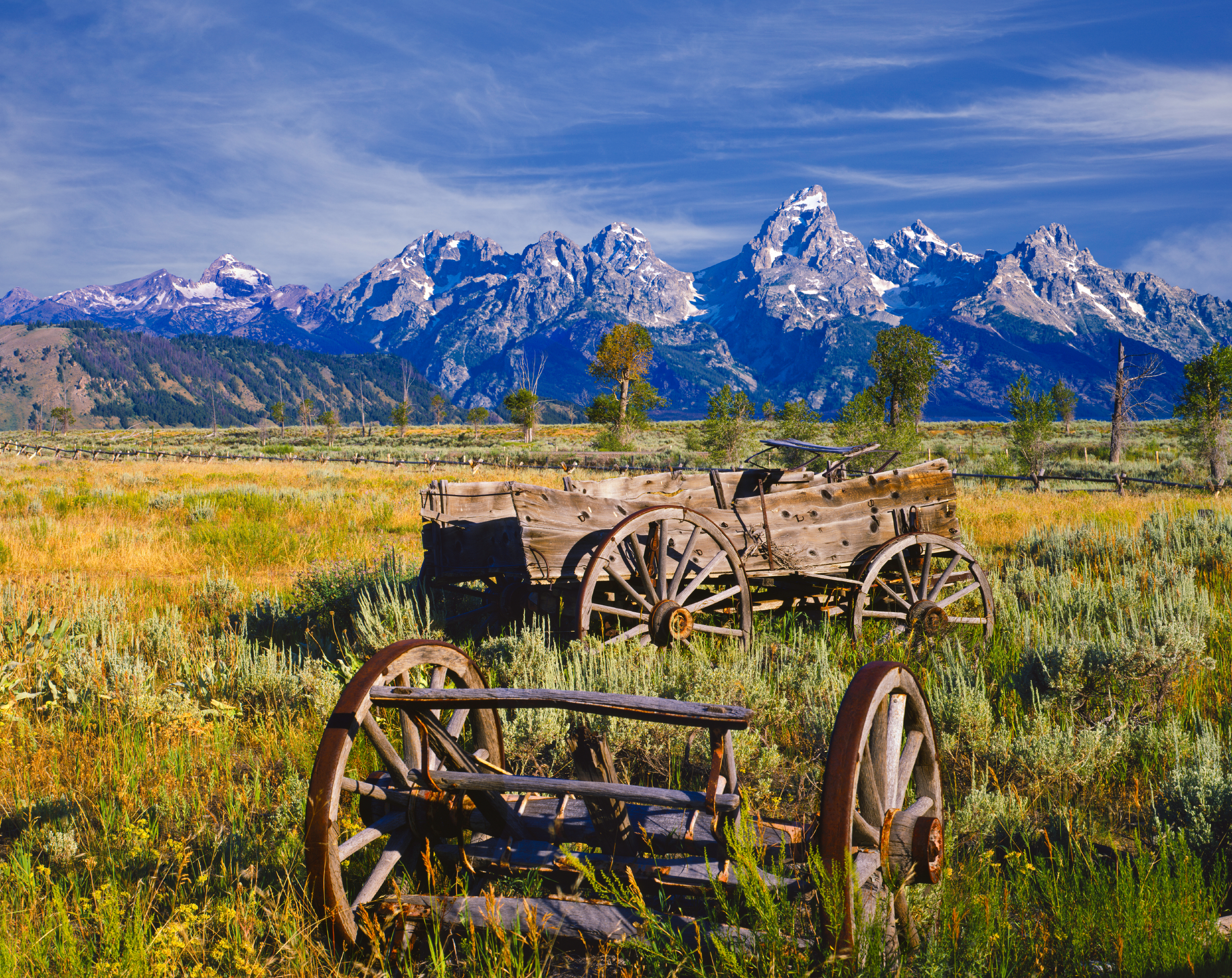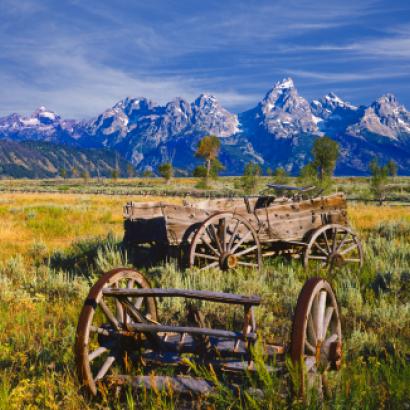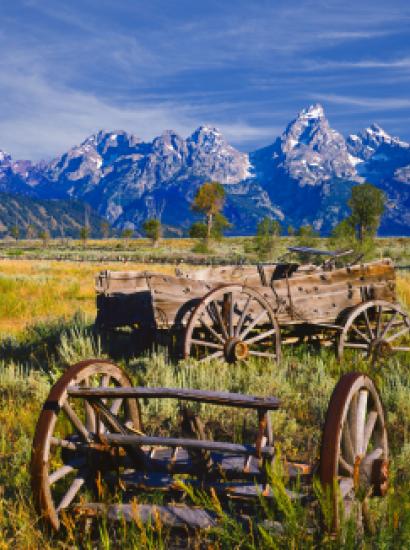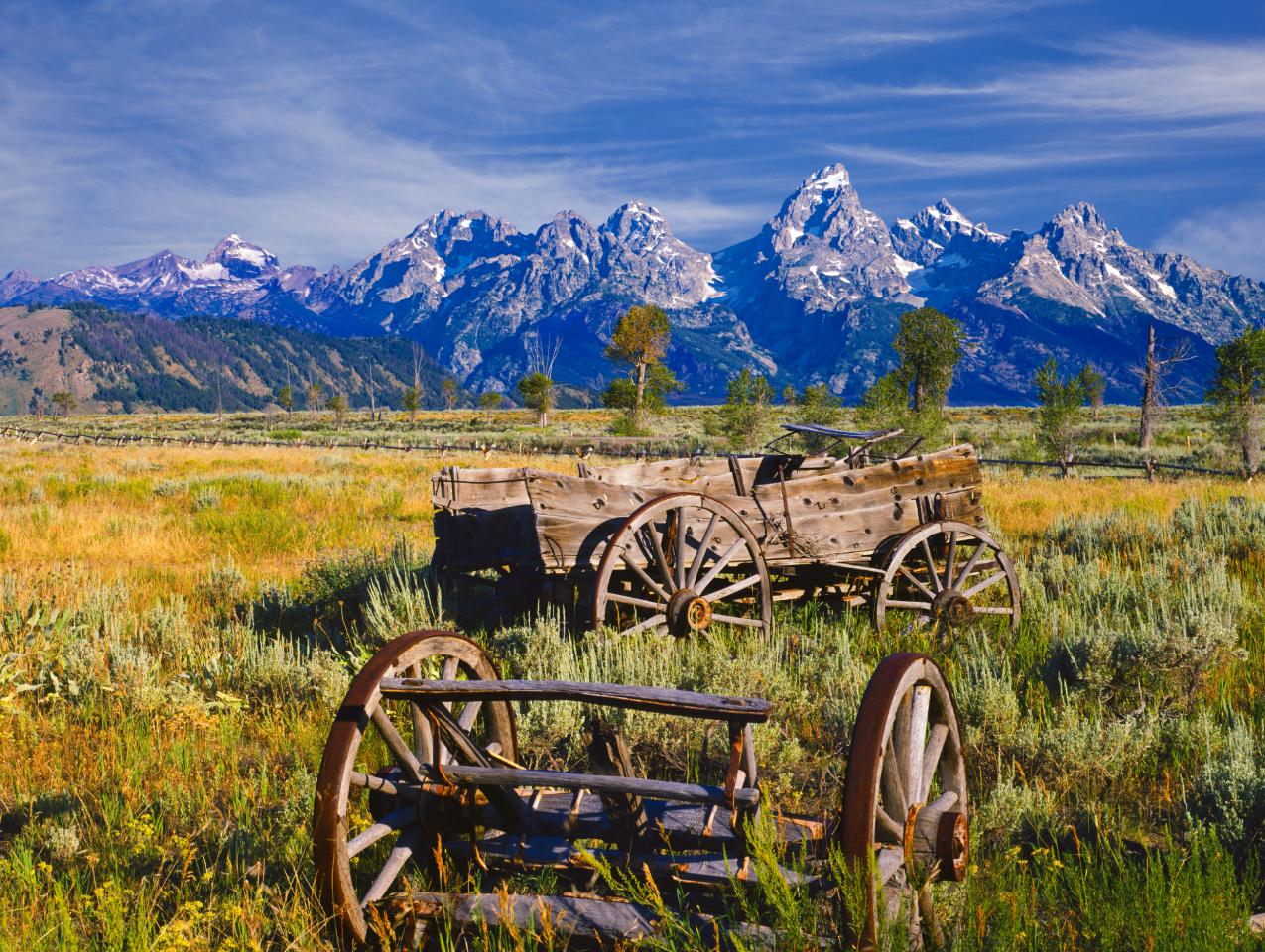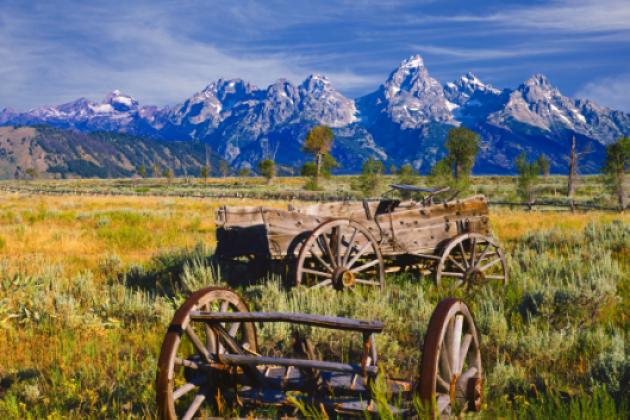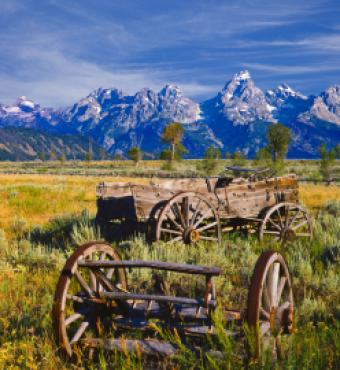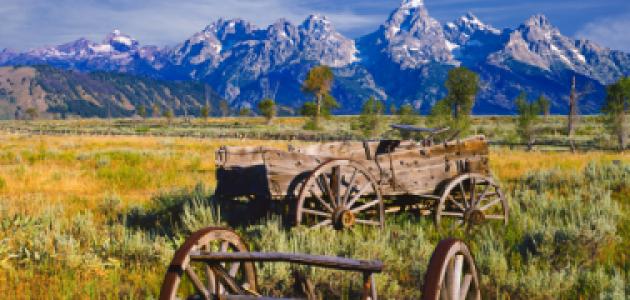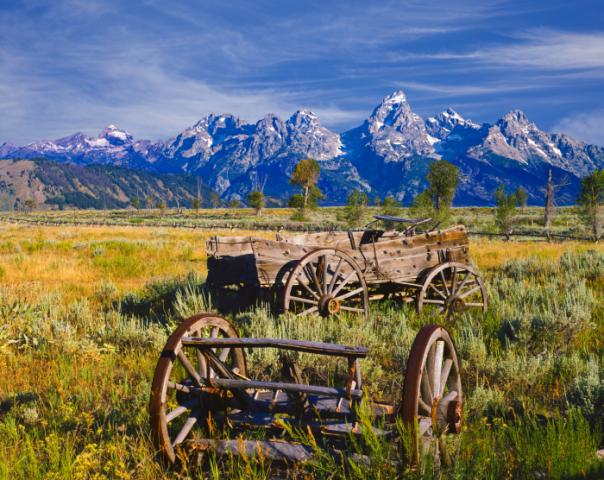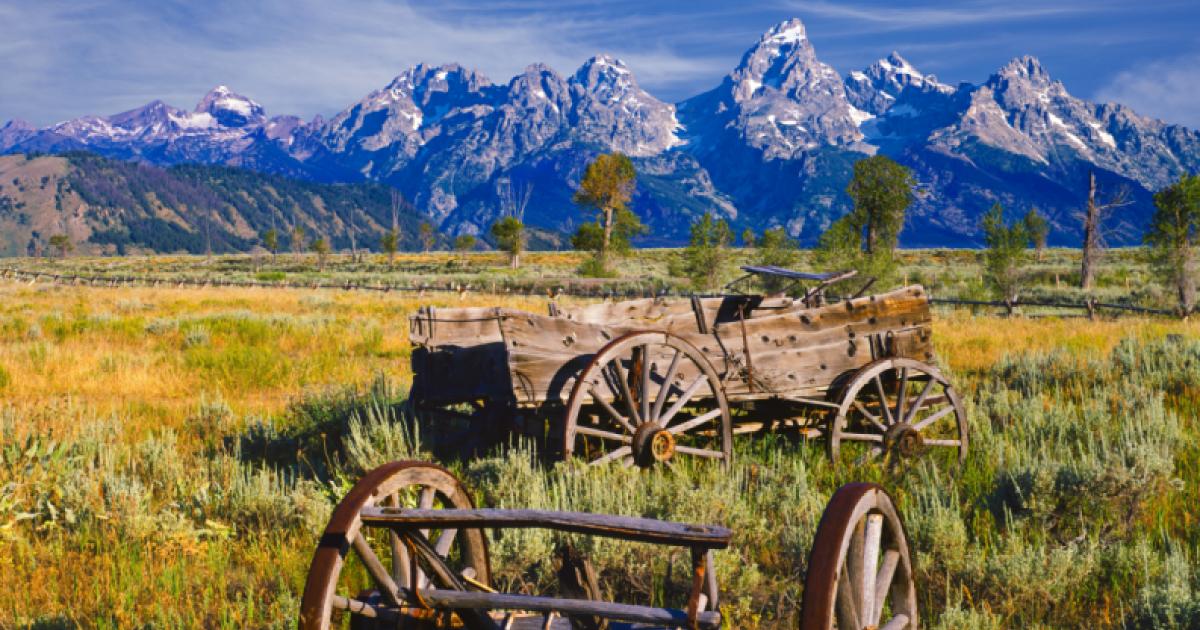- Energy & Environment
- Science & Technology
- Politics, Institutions, and Public Opinion
- State & Local
- California
Some Californians give Earth Day a symbolic nod—picking up litter on a beach, riding a bicycle to work to spare the air.
California State University–Long Beach turned the one day into a weeklong teachable moment, with lessons in composting and planting herbs and seeds. And, for fun, a screening of the movie Wall-E on the campus’s north lawn (the hook: “What if we polluted Earth so much that mankind was forced to leave?”)
Personally, I believe there’s a better movie pertaining to California’s environment—and its politics: There Will Be Blood, the 2007 Paul Thomas Anderson epic that earned Daniel Day-Lewis the second of his three Best Actor Oscars.
The California environmental connection: Day-Lewis’s character, Daniel Plainview, is a silver prospector who comes to California in search of oil riches (although the film takes its inspiration from Kern County, California’s oil rush of a century ago, the filming was done in the high desert of the Trans-Pecos in West Texas).
The California political connection: the film is based on the 1927 novel Oil!, by Sinclair Lewis, written in the aftermath of the Teapot Dome Scandal. Lewis would go on to run for governor in 1934 as a Bernie Sanders–like “democratic socialist” whose EPIC plan (“End Poverty in California”) called for a massive public-works program, sweeping tax changes, and guaranteed pensions.
Eight-five years after Sinclair’s failed run, California governor Gavin Newsom faces a decision as to what to do with regard to California’s oil industry, specifically, hydraulic fracturing (aka “fracking”), the high-pressure pumping of chemicals and water into underground shale to crack it open and release oil.
The surprise: Earth Day came and passed without Newsom doing anything about the controversial practice. He and First Partner Jennifer Siebel Newsom held a public event with children featuring demonstration projects on climate-smart cultivation and healthy soils, plus the First Partner reading “a green-minded children’s book.”
What kid wouldn’t rather do that than an Easter egg roll?
Here’s why Monday’s non-surprise was a surprise. Newsom ran for governor with little mystery regarding fracking and oil exploration. “The fossil-fuel era is ending, and California is not interested in the boom-or-bust oil economy,” then lieutenant governor Newsom wrote in a letter to the federal Bureau of Ocean Energy and Management. Newsom would later affirm his support for a fracking ban. And he refused campaign donations from the oil industry.
But in the first 100 days (plus one week) of his first term as California’s 40th governor, Newsom didn’t do anything bold or splashy with regard to the environment.
In fact, the green watchdog Food & Water Watch issued a press release declaring that the new governor “has yet to offer any significant policies on climate change or curbing California’s dependence of fossil fuels.”
Another letter sent to Newsom by 120 state and national environment groups likewise called on Newsom to put a halt to fracking and new drilling permits.
So why didn’t Newsom make a big green splash on Earth Day? Maybe he’s distracted by other high-profile matters—battling the Trump Administration on migrant policy, releasing a strike-force report that delves into the hot mess of wildfires and homeownership.
Or maybe, in this instance, the environmentally sensitive governor couldn’t see the forest for the trees. For in letting Earth Day come and go without a fracking pronouncement, Newsom uncharacteristically passed on three things that have defined his gubernatorial style.
They are:
Ramping Up the Drama. As far as blue-state politics and fracking are concerned, Newsom and California are behind the curve. Oregon’s House of Representatives approved a 10-year ban a month ago. New York governor Andrew Cuomo approved a ban in December 2014, citing health and environmental risks.
But that doesn’t mean Newsom wouldn’t reap national headlines if he did the same—even if it occurred 52 months after Cuomo’s action. At least, that’s what we learned when Newsom declared a death-penalty moratorium on his 66th day in office. Colorado, Oregon and Pennsylvania had all seen such gubernatorial moratoria this decade. But when California’s governor does the same, it causes a nationwide ripple.
As for a political backlash from banning fracking, it’s not a second-term killer for Newson. Twenty-eight of California’s 58 counties are home to oil and gas production. However, most already run conservative red. Only 41% of oil-rich Kern County voted for Newsom last fall. But that’s in a county that totaled 203,000 votes, which isn’t 1/60th of the 12.5 million gubernatorial ballots cast statewide last fall. Newsom can easily survive the backlash in Kern County and the rest of California’s oil belt.
Doing the Un-Jerry. Gavin Newsom is 29 years and six months younger than his predecessor, Jerry Brown. And he strives to be light-years apart in terms of style and image.
Newsom’s drinking-from-a-firehose approach to his first 100 days in office (here’s a timeline) is in stark contrast to Brown, who took office in 2011 and focused on one thing at first: California’s financial mess.
For a governor who thrived on certainty and mastery of policy, fracking wasn’t one of Jerry Brown’s shining moments. While preaching that “stopping carbon will be like stopping a heroin addiction,” he refused to ban fracking.
However, Brown did sign California’s first law regulating fracking. Well operators are now required to acquire permits before fracking; those permits require information about water and chemical usage and seismic impact. What that managed to achieve: upsetting both sides of the oil-in-California argument.
Why didn’t Brown go the extra step and impose a ban? Chalk it up to his “canoe theory” of governing—paddling left, paddling right, staying midstream. Brown tried to paddle left with regard to carbon emissions while also acknowledging economic impact (about 20% of California’s oil comes from fracked wells; while oil accounts for only 3% of the nation-state’s GDP, petroleum extraction accounts for one-fifth of Kern County’s total gross domestic product).
But whereas Brown cautiously paddled a canoe for eight years, Newsom’s past 15 weeks have been a noisy, wake-producing jet-ski ride. Thus a dramatic fracking ban on Earth Day would have been one more opportunity to gun the engine and kick up a wake.
Doing What Bothers Trump. There are times when the California governor and the American president can co-exist. Federal disaster relief, for example—even though the cease-fire during wildfires didn’t last long. Newsom’s also praised the Trump administration’s interest in spurring investment in low-income areas.
As for oil, Trump and Newsom mix like . . . well, oil and water.
The Trump administration wants to expand offshore oil and gas exploration and reportedly is looking into ways to lessen states’ ability to gum up the works (i.e., a more streamlined state-review process that speeds up hearings and environmental-impact statements).
Newsom ran on an anti-drilling platform (“I’ll protect California’s shorelines against expanded offshore oil drilling,” he boasted in a campaign video). And that’s just one environmental rift between state and federal government. California and Washington, DC, clash on fuel-efficiency standards, climate change, and forest management.
By the way, the kid-lit book that California’s First Partner read at her Earth Day event featured a character named Michael Recycle, whose superhero power is teaching folks about a greener way of life.
Time will tell if books are ever written about her husband’s environmental ardor.







